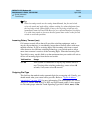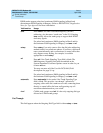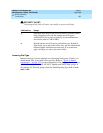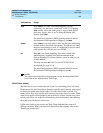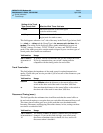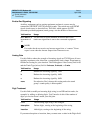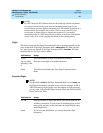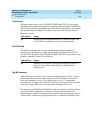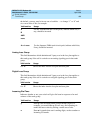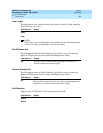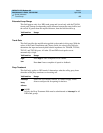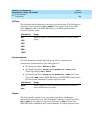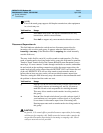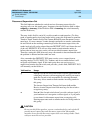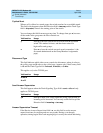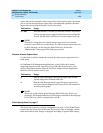
DEFINITY ECS Release 8.2
Administrator’s Guide
555-233-506
Issue 1
April 2000
Screen reference
993Trunk Group
17
the default, you may need to invert one or both bits — to change “1” to “0” and
vice-versa in the A-bit, for example.
Analog Loss Group
This field determines which administered 2-party row in the loss plan applies to
this trunk group if the call is carried over an analog signaling port in the trunk
group.
Digital Loss Group
This field determines which administered 2-party row in the loss plan applies to
this trunk group if the call is carried over a digital signaling port in the trunk
group.
Incoming Dial Tone
Indicates whether or not your switch will give dial tone in response to far-end
seizures of the trunk group.
Valid entries Usage
A
For the TN464B and later circuit packs, indicate which bits, if
any, should be inverted.
B
A&B
none
A and none For the Japanese 2Mbit trunk circuit pack, indicate which bits,
if any, should be inverted.
Valid entries Usage
1
to 17 Shows the index into the loss plan and tone plan.
Valid entries Usage
1
to 17 Shows the index into the loss plan and tone plan.
Valid entries Usage
y
Enter y if the incoming trunk group transmits digits. For
example, you would enter
y for two-way, dial-repeating tie
trunks that users select by dialing a trunk access code.
n
Enter n for trunks that aren’t sending digits, such as tandem or
incoming CO trunks.



